Abstract
Lower respiratory costs were hypothesized as providing an additional benefit in C4 plants compared to C3 plants due to less investment in proteins in C4 leaves. Therefore, photosynthesis and dark respiration of mature leaves were compared between a number of C4 and C3 species. Although photosynthetic rates were generally greater in C4 when compared to C3 species, no differences were found in dark respiration rates of individual leaves at either the beginning or after 16 h of the dark period. The effects of nitrogen on photosynthesis and respiration of individual leaves and whole plants were also investigated in two species that occupy similar habitats, Amaranthus retroflexus (C4) and Chenopodium album (C3). For mature leaves of both species, there was no relationship between leaf nitrogen and leaf respiration, with leaves of both species exhibiting a similar rate of decline after 16 h of darkness. In contrast, leaf photosynthesis increased with increasing leaf nitrogen in both species, with the C4 species displaying a greater photosynthetic response to leaf nitrogen. For whole plants of both species grown at different nitrogen levels, there was a clear linear relationship between net CO2 uptake and CO2 efflux in the dark. The dependence of nightly CO2 efflux on CO2 uptake was similar for both species, although the response of CO2 uptake to leaf nitrogen was much steeper in the C4 species, Amaranthus retroflexus. Rates of growth and maintenance respiration by whole plants of both species were similar, with both species displaying higher rates at higher leaf nitrogen. There were no significant differences in leaf or whole plant maintenance respiration between species at any temperature between 18 and 42°C. The data suggest no obvious differences in respiratory costs in C4 and C3 plants.
Full text
PDF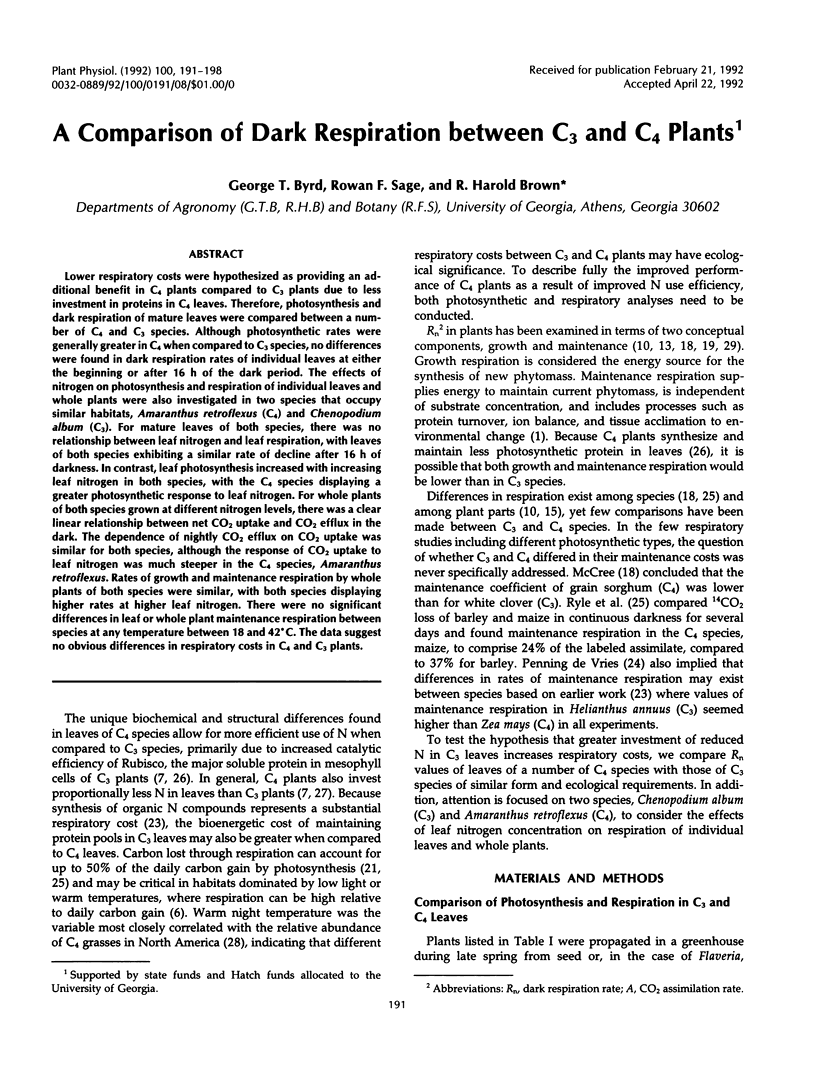

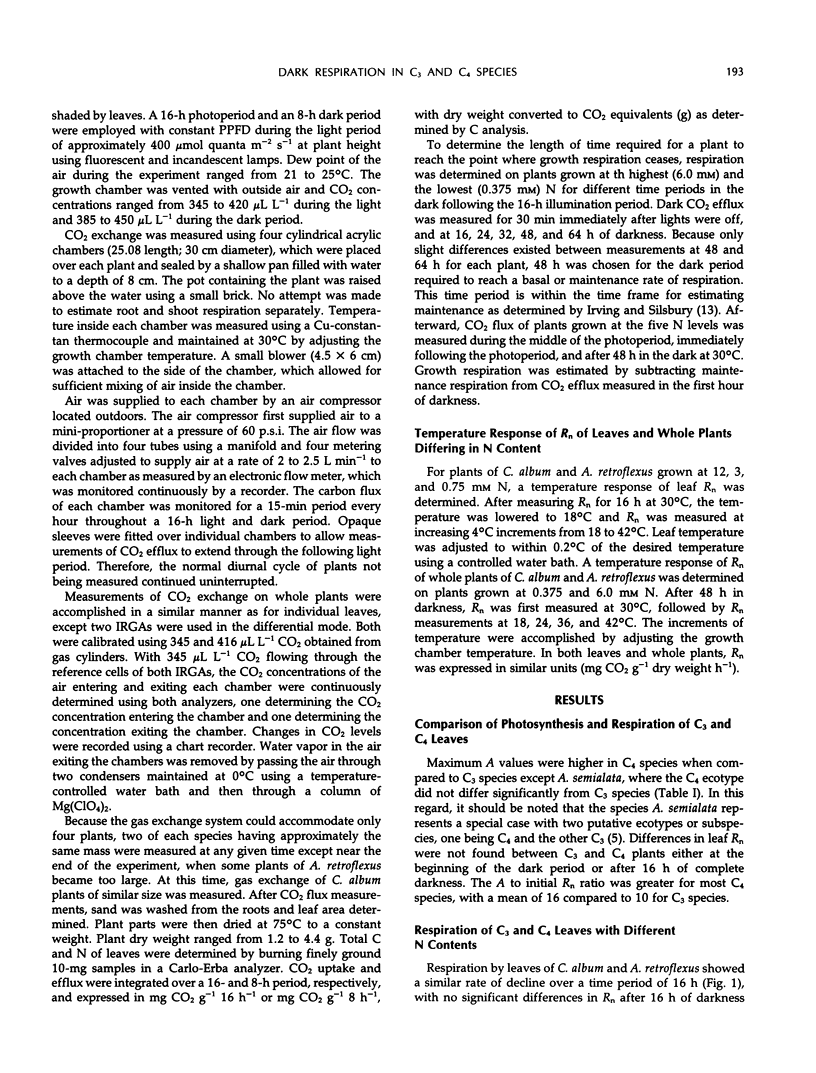
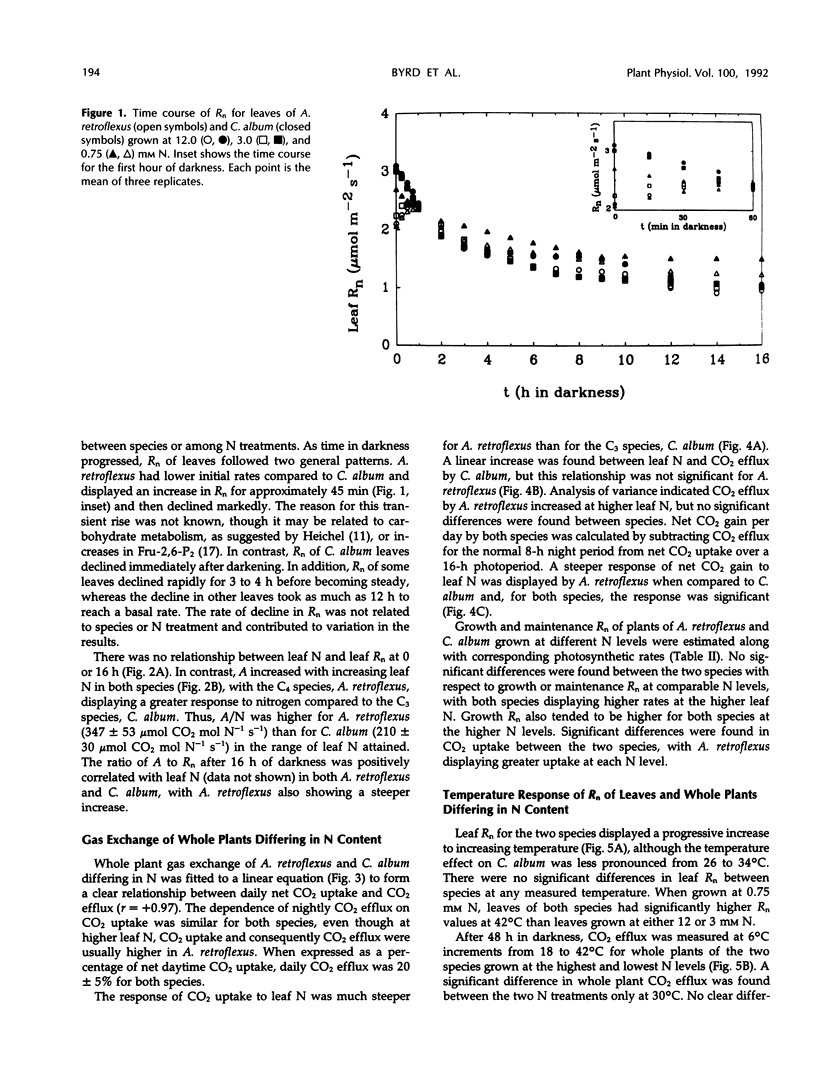
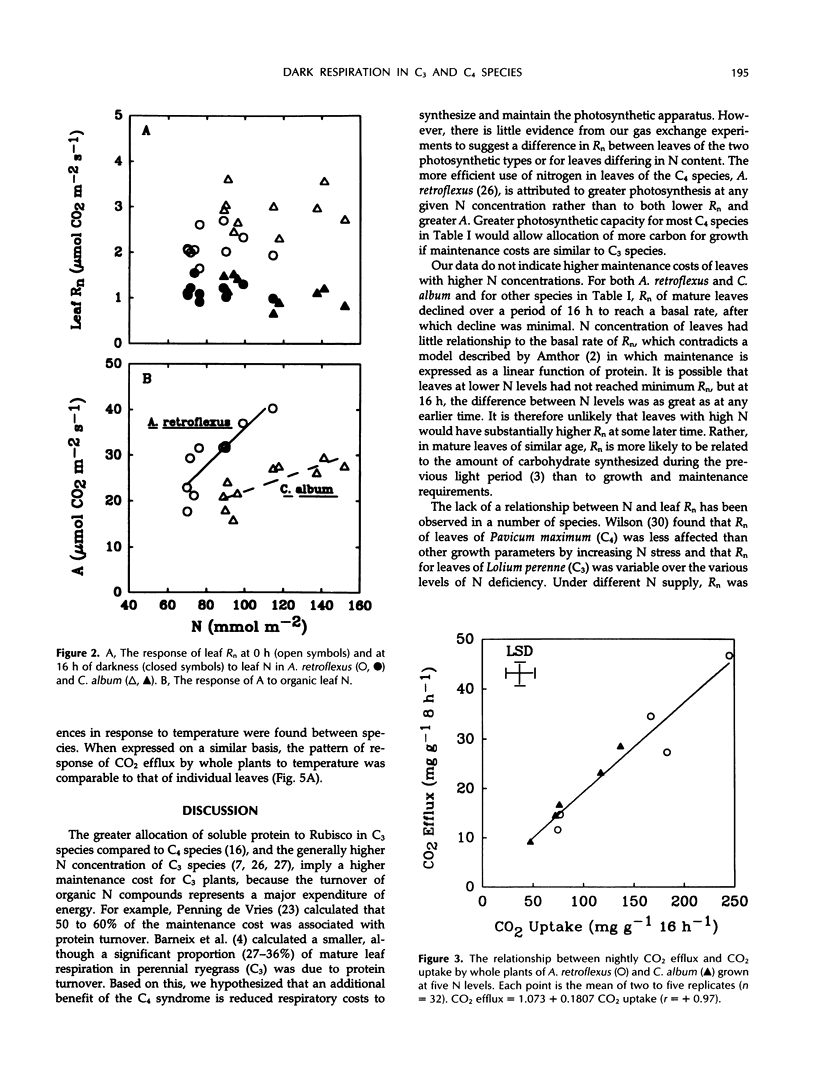
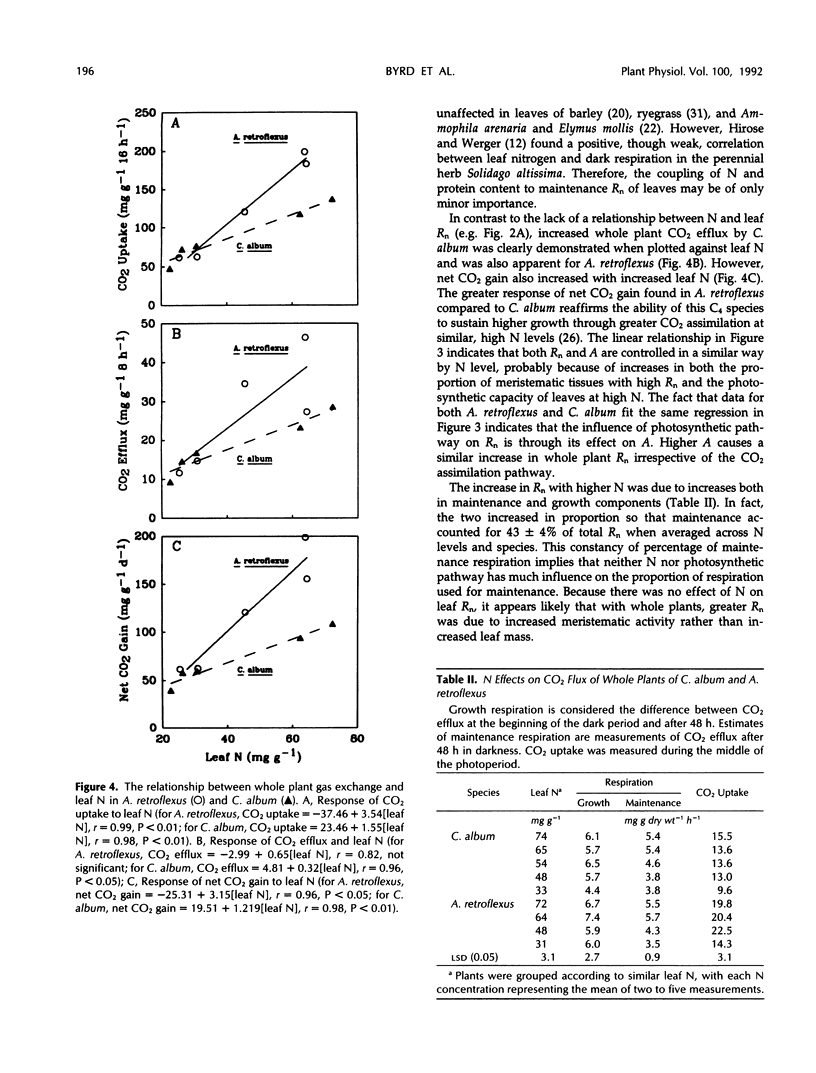
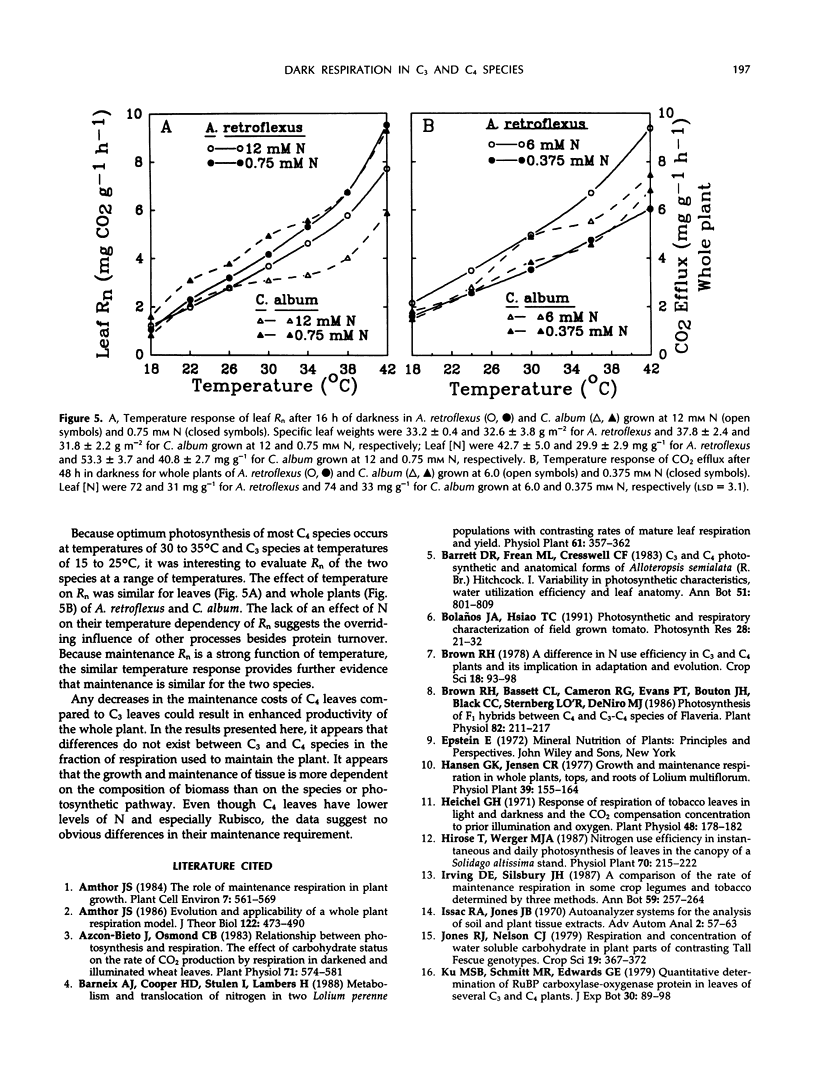
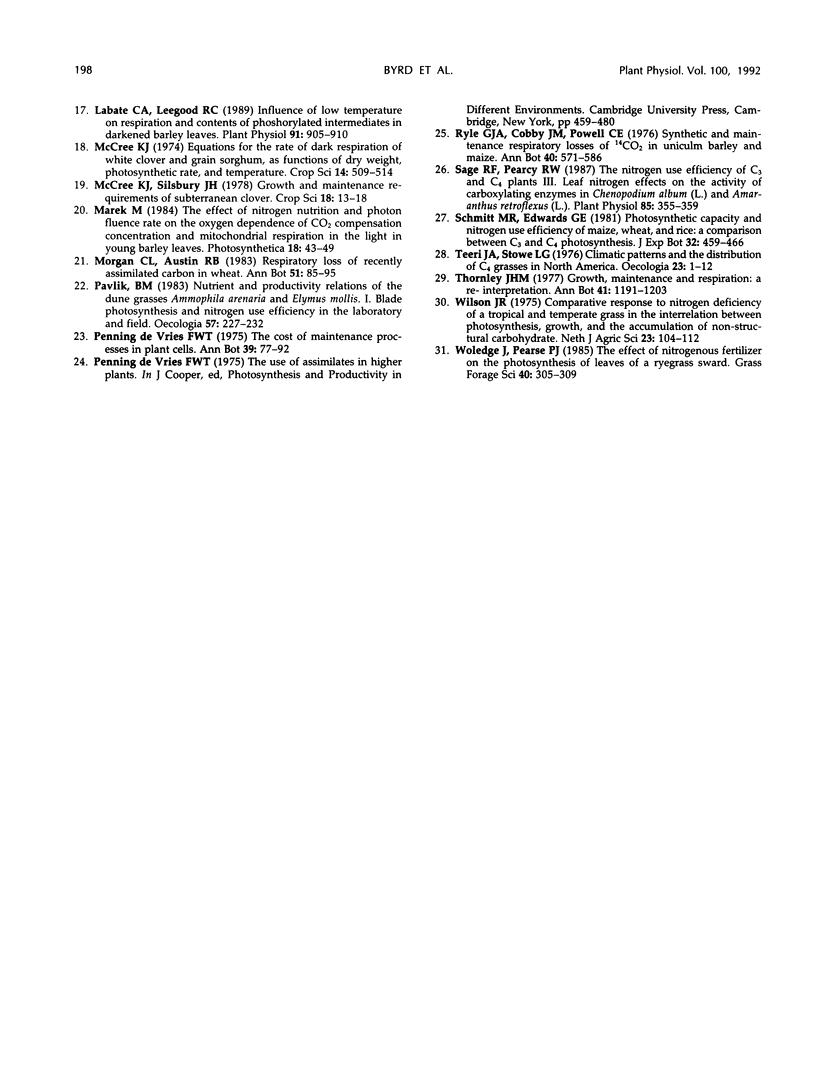
Selected References
These references are in PubMed. This may not be the complete list of references from this article.
- Azcón-Bieto J., Osmond C. B. Relationship between Photosynthesis and Respiration: The Effect of Carbohydrate Status on the Rate of CO(2) Production by Respiration in Darkened and Illuminated Wheat Leaves. Plant Physiol. 1983 Mar;71(3):574–581. doi: 10.1104/pp.71.3.574. [DOI] [PMC free article] [PubMed] [Google Scholar]
- Brown R. H., Bassett C. L., Cameron R. G., Evans P. T., Bouton J. H., Black C. C., Sternberg L. O., Deniro M. J. Photosynthesis of F(1) Hybrids between C(4) and C(3)-C(4) Species of Flaveria. Plant Physiol. 1986 Sep;82(1):211–217. doi: 10.1104/pp.82.1.211. [DOI] [PMC free article] [PubMed] [Google Scholar]
- Heichel G. H. Response of Respiration of Tobacco Leaves in Light and Darkness and the CO(2) Compensation Concentration to Prior Illumination and Oxygen. Plant Physiol. 1971 Aug;48(2):178–182. doi: 10.1104/pp.48.2.178. [DOI] [PMC free article] [PubMed] [Google Scholar]
- Labate C. A., Leegood R. C. Influence of low temperature on respiration and contents of phosphorylated intermediates in darkened barley leaves. Plant Physiol. 1989 Nov;91(3):905–910. doi: 10.1104/pp.91.3.905. [DOI] [PMC free article] [PubMed] [Google Scholar]
- Sage R. F., Pearcy R. W., Seemann J. R. The Nitrogen Use Efficiency of C(3) and C(4) Plants : III. Leaf Nitrogen Effects on the Activity of Carboxylating Enzymes in Chenopodium album (L.) and Amaranthus retroflexus (L.). Plant Physiol. 1987 Oct;85(2):355–359. doi: 10.1104/pp.85.2.355. [DOI] [PMC free article] [PubMed] [Google Scholar]


